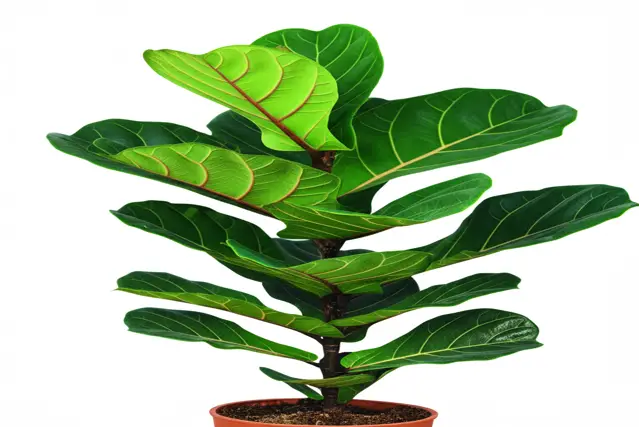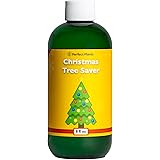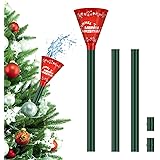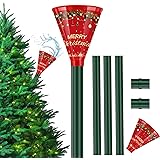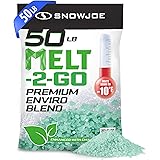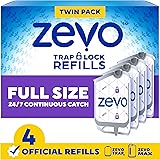The Fiddle Leaf Fig (Ficus lyrata) – a majestic indoor plant with broad, violin-shaped leaves – is a coveted addition to any home. Its sculptural form and vibrant green foliage bring a touch of the tropics indoors, instantly elevating any space. But what happens when those vibrant leaves start showing unwelcome signs, like unsightly red spots?
Finding red spots on your beloved Fiddle Leaf Fig can be alarming. Don’t panic! This comprehensive guide is your roadmap to diagnosing the cause, implementing effective solutions, and preventing future outbreaks. We’ll explore the most common culprits behind these blemishes, providing actionable tips and expert insights to restore your Fiddle Leaf Fig to its former glory. Let’s dive in!
Understanding Red Spots on Your Fiddle Leaf Fig
Before jumping into solutions, it’s crucial to understand that red spots on a Fiddle Leaf Fig can be caused by a variety of factors, ranging from environmental stressors to pest infestations and fungal diseases. Accurate identification is key to successful treatment. Neglecting the problem can lead to further damage and even the demise of your prized plant.
In 2023, a survey by the American Horticultural Society showed that Fiddle Leaf Figs rank among the top 5 most commonly reported plant issues among indoor plant enthusiasts, with red spots being a frequent concern. This highlights the importance of being proactive and informed when caring for this popular plant.
Why is My Fiddle Leaf Fig Developing Red Spots?
Several factors can contribute to the appearance of red spots on your Fiddle Leaf Fig. Here are the most common culprits:
- Edema: This is often the most common cause and is a physiological issue caused by inconsistent watering.
- Bacterial Infection: Bacterial leaf spot can manifest as reddish or brownish spots.
- Fungal Disease: Several fungal diseases can cause spots on leaves.
- Pest Infestation: Certain pests can cause damage that appears as red spots.
- Sunburn: Direct, intense sunlight can scorch leaves, resulting in reddish-brown patches.
Identifying the Culprit: Diagnosing the Red Spots
Careful observation is your first line of defense. Examine the red spots closely, paying attention to their:
- Shape and Size: Are they small, pinpoint spots, or larger, irregular patches?
- Color: Are they bright red, rusty brown, or more of a purplish-red?
- Texture: Are the spots raised, sunken, or flat? Are they dry and crispy, or soft and mushy?
- Location: Are they concentrated on older leaves, newer leaves, or scattered randomly?
- Distribution: Are the spots isolated, or are they clustered together? Are they appearing on the edges of the leaves, in the middle, or along the veins?
Also, consider your plant’s overall environment and care routine. Has anything changed recently? Have you moved the plant, altered your watering schedule, or noticed any pests? These clues will help you narrow down the potential causes.

fiddle leaf fig edema
1. Edema: The Watering Woes
Edema is a physiological disorder, not a disease, and it’s often the most frequent reason for red spots on Fiddle Leaf Figs, especially in home environments. It occurs when the plant takes up water faster than it can transpire it. This excess water causes cells to rupture, leading to small, reddish-brown, blister-like spots, usually on the undersides of the leaves. These spots can eventually turn brown and corky.
Symptoms of Edema
- Small, reddish-brown or tan raised spots, primarily on the undersides of leaves.
- Spots may appear blister-like.
- Older leaves are more commonly affected.
- Spots can eventually turn brown and corky.
Causes of Edema
- Inconsistent Watering: Alternating between very dry and very wet soil.
- Overwatering: Keeping the soil constantly soggy.
- Poor Drainage: Soil that doesn’t drain well, leading to waterlogged conditions.
- Low Light: Reduced transpiration rate due to insufficient light.
- High Humidity: Reduced transpiration rate due to saturated air. While Fiddle Leaf Figs enjoy humidity, excessively high humidity combined with overwatering can exacerbate edema.
- Cool Temperatures: Slower transpiration rates.
Fixing Edema
Addressing edema involves adjusting your watering habits and improving environmental conditions.
- Adjust Watering Schedule: Allow the top inch or two of soil to dry out completely before watering thoroughly. Use a moisture meter to help determine when to water. A moisture meter reading of 3 or less is a good indicator that it’s time to water.
- Improve Drainage: Ensure your pot has adequate drainage holes. Consider repotting your Fiddle Leaf Fig into a well-draining potting mix specifically formulated for indoor plants. Look for mixes containing ingredients like perlite, orchid bark, or coco coir.
- Increase Light Exposure: Move your Fiddle Leaf Fig to a brighter location. If natural light is limited, consider using a grow light to supplement. 2024 trends indicate a rise in popularity of full-spectrum LED grow lights for indoor plants.
- Improve Air Circulation: Ensure good air circulation around your plant. Avoid placing it in a stuffy corner. A small fan can help improve airflow.
- Maintain Consistent Temperatures: Avoid placing your Fiddle Leaf Fig near drafts or heating vents. Aim for a consistent temperature between 65-75°F (18-24°C).
- Remove Severely Affected Leaves: If some leaves are heavily affected by edema, you can remove them to improve the plant’s overall appearance.
Real-world example: I had a Fiddle Leaf Fig that developed edema after I went on vacation and my house sitter overwatered it. The spots were primarily on the undersides of the older leaves. After I returned, I adjusted my watering schedule, allowing the soil to dry out more between waterings, and the edema subsided. I also moved it to a slightly brighter spot.
2. Bacterial Infection: Leaf Spot Diseases
Bacterial leaf spot is a disease caused by various bacteria. It can manifest as small, water-soaked spots that eventually turn reddish-brown or black. The spots may be surrounded by a yellow halo. Unlike edema, bacterial leaf spot can spread rapidly, especially in humid conditions.
Symptoms of Bacterial Leaf Spot
- Small, water-soaked spots on leaves.
- Spots enlarge and turn reddish-brown or black.
- Spots may be surrounded by a yellow halo.
- Can spread rapidly.
- May cause leaf drop.
Causes of Bacterial Leaf Spot
- Overhead Watering: Splashing water can spread bacteria.
- Poor Air Circulation: Humid conditions favor bacterial growth.
- Contaminated Tools: Using unsterilized pruning tools.
- Infected Plants: Introducing infected plants into your collection.
Read More: How to Start a Bee Garden with Wildflowers: Get to Know
Fixing Bacterial Leaf Spot
Bacterial leaf spot can be challenging to treat, and prevention is key. If you suspect your Fiddle Leaf Fig has a bacterial infection, take the following steps:
- Isolate the Plant: Immediately separate the infected plant from other plants to prevent the spread of the disease.
- Remove Affected Leaves: Carefully prune off any leaves with visible spots, using sterilized pruning shears. Dip the blades in a solution of 1 part bleach to 9 parts water between each cut to prevent spreading the bacteria.
- Improve Air Circulation: Increase air circulation around the plant. A small fan can help.
- Avoid Overhead Watering: Water the plant at the base of the stem to avoid wetting the leaves.
- Copper-Based Fungicide: While technically a bactericide, copper-based fungicides can help control the spread of bacterial leaf spot. Apply according to the product label. Be aware that copper-based products can sometimes cause leaf damage, so test on a small area first. It is always important to check any local regulations regarding the use of fungicides, as some may be restricted or require specific licensing.
- Consider Replacement: In severe cases, where the infection is widespread and the plant is severely affected, it may be best to discard the plant to prevent the spread of the disease to other plants.
Real-world example: A friend of mine purchased a Fiddle Leaf Fig from a local nursery and didn’t quarantine it properly. Within a few weeks, it developed small, dark spots on the leaves with yellow halos. It turned out to be bacterial leaf spot. She isolated the plant, removed the affected leaves, and treated it with a copper-based fungicide. Thankfully, she caught it early, and the plant recovered.
3. Fungal Disease: Spotting the Fungi
Several fungal diseases can cause red or reddish-brown spots on Fiddle Leaf Figs. Some common culprits include:
- Anthracnose: Causes dark, sunken spots that can spread rapidly.
- Leaf Blight: Results in large, irregular brown or reddish-brown blotches on the leaves.
Symptoms of Fungal Disease
- Dark, sunken spots (Anthracnose).
- Large, irregular brown or reddish-brown blotches (Leaf Blight).
- Spots may have a target-like appearance.
- May cause leaf drop.
Causes of Fungal Disease
- High Humidity: Fungi thrive in humid environments.
- Poor Air Circulation: Stagnant air promotes fungal growth.
- Overhead Watering: Splashing water can spread fungal spores.
- Infected Plants: Introducing infected plants into your collection.
Fixing Fungal Disease
Treatment for fungal diseases is similar to that for bacterial infections:
- Isolate the Plant: Prevent the spread of the disease to other plants.
- Remove Affected Leaves: Prune off any leaves with visible spots, using sterilized pruning shears.
- Improve Air Circulation: Increase air circulation around the plant.
- Avoid Overhead Watering: Water the plant at the base of the stem.
- Fungicide Treatment: Apply a fungicide specifically formulated for treating fungal leaf spot diseases. Options include copper-based fungicides, neem oil, or other broad-spectrum fungicides. Always follow the product label instructions. A 2023 report from the EPA highlights the importance of using fungicides responsibly and in accordance with label instructions to minimize environmental impact.
Real-world example: My neighbor had a beautiful Fiddle Leaf Fig that developed large, brown blotches on its leaves. She initially thought it was sunburn, but the spots continued to spread, even after moving the plant to a shadier location. It turned out to be leaf blight. She treated it with a fungicide and improved the air circulation around the plant, which helped to stop the spread of the disease.
4. Pest Infestation: Uninvited Guests
While less common, certain pests can cause damage that appears as red spots on Fiddle Leaf Figs. These pests feed on plant sap, causing discoloration and damage to the leaves. Common culprits include:
- Spider Mites: Tiny, sap-sucking pests that create fine webs on the undersides of leaves. Their feeding can cause small, reddish-brown spots.
- Scale: Small, immobile insects that attach themselves to leaves and stems. They can appear as small, brown or reddish-brown bumps.
- Thrips: Tiny, slender insects that feed on plant tissue, causing silvery or bronze streaks and small, dark spots.
Symptoms of Pest Infestation
- Small, reddish-brown spots (Spider Mites).
- Fine webbing on leaves (Spider Mites).
- Small, brown or reddish-brown bumps on leaves and stems (Scale).
- Silvery or bronze streaks on leaves (Thrips).
- Small, dark spots (Thrips).
- Sticky residue (honeydew) on leaves (caused by some pests).
Read More: Odor Absorbing Indoor Plants: Pros and Cons
Fixing Pest Infestation
Dealing with pests requires prompt action and persistence.
- Identify the Pest: Use a magnifying glass to carefully examine the leaves and stems for signs of pests. Accurate identification is crucial for selecting the appropriate treatment.
- Isolate the Plant: Prevent the spread of pests to other plants.
- Wipe Down Leaves: Gently wipe down the leaves with a damp cloth or sponge to remove pests.
- Insecticidal Soap: Apply insecticidal soap according to the product label. Be sure to spray all surfaces of the leaves, including the undersides. Repeat applications may be necessary.
- Neem Oil: Neem oil is a natural insecticide that can be effective against a variety of pests. Apply according to the product label.
- Horticultural Oil: Horticultural oil can smother pests. Apply according to the product label. Avoid using horticultural oil on hot or sunny days, as it can cause leaf burn.
- Systemic Insecticides: For severe infestations, you may need to resort to systemic insecticides. These are absorbed by the plant and kill pests that feed on it. Use systemic insecticides with caution and always follow the product label instructions. Be aware that some systemic insecticides may not be permitted for use on plants that produce edible fruits or vegetables.
Real-world example: I noticed small, reddish-brown spots and fine webbing on the leaves of my Fiddle Leaf Fig. Upon closer inspection, I discovered spider mites. I isolated the plant, wiped down the leaves, and treated it with insecticidal soap. It took several applications, but I eventually eradicated the spider mites.
5. Sunburn: Too Much of a Good Thing
While Fiddle Leaf Figs need bright, indirect light, direct sunlight can scorch their leaves, causing reddish-brown or tan patches. Sunburn typically occurs on leaves that are directly exposed to intense sunlight, especially during the hottest part of the day.
Symptoms of Sunburn
- Reddish-brown or tan patches on leaves.
- Patches may be dry and crispy.
- Sunburn typically occurs on leaves that are directly exposed to sunlight.
Causes of Sunburn
- Direct sunlight exposure, especially during the hottest part of the day.
- Sudden increase in light intensity.
- Lack of acclimation to brighter light.
Fixing Sunburn
Addressing sunburn involves adjusting your plant’s light exposure.
- Move the Plant: Move your Fiddle Leaf Fig to a location with bright, indirect light. Avoid direct sunlight exposure.
- Provide Shade: If you can’t move the plant, provide shade during the hottest part of the day. You can use a sheer curtain or blinds to filter the sunlight.
- Acclimation: If you’re moving your Fiddle Leaf Fig to a brighter location, do so gradually to allow the plant to acclimate to the increased light intensity.
- Remove Severely Damaged Leaves: If some leaves are heavily damaged by sunburn, you can remove them to improve the plant’s overall appearance.
Real-world example: I accidentally left my Fiddle Leaf Fig on my sunny balcony for an entire afternoon. The next day, the leaves that were directly exposed to the sun had developed large, reddish-brown patches. I immediately moved the plant to a shadier location and removed the severely damaged leaves. The plant recovered, but it was a valuable lesson learned.
Preventative Measures: Keeping Red Spots at Bay
Prevention is always better than cure. By implementing a few simple preventative measures, you can significantly reduce the risk of red spots on your Fiddle Leaf Fig.
- Watering Wisely: Allow the top inch or two of soil to dry out completely before watering thoroughly. Use a moisture meter to avoid overwatering or underwatering.
- Proper Drainage: Ensure your pot has adequate drainage holes and use a well-draining potting mix.
- Adequate Light: Provide your Fiddle Leaf Fig with bright, indirect light. Avoid direct sunlight exposure.
- Good Air Circulation: Ensure good air circulation around your plant.
- Regular Inspection: Regularly inspect your Fiddle Leaf Fig for signs of pests or diseases.
- Cleanliness: Keep the leaves clean by wiping them down with a damp cloth or sponge. This helps to remove dust and pests.
- Quarantine New Plants: Quarantine new plants for a few weeks before introducing them to your existing collection to prevent the spread of pests or diseases.
- Sterilize Pruning Tools: Always sterilize your pruning tools before and after use to prevent the spread of diseases.
- Fertilize Regularly: Fertilize your Fiddle Leaf Fig regularly during the growing season (spring and summer) with a balanced liquid fertilizer.
Troubleshooting Table: Quick Reference Guide
| Symptom | Possible Cause | Solution |
|---|---|---|
| Small, reddish-brown spots on the undersides of leaves | Edema | Adjust watering schedule, improve drainage, increase light exposure, improve air circulation. |
| Small, water-soaked spots with yellow halos | Bacterial Leaf Spot | Isolate plant, remove affected leaves, improve air circulation, avoid overhead watering, apply copper-based fungicide. |
| Dark, sunken spots | Anthracnose (Fungal Disease) | Isolate plant, remove affected leaves, improve air circulation, avoid overhead watering, apply fungicide. |
| Large, irregular brown or reddish-brown blotches | Leaf Blight (Fungal Disease) | Isolate plant, remove affected leaves, improve air circulation, avoid overhead watering, apply fungicide. |
| Small, reddish-brown spots with fine webbing | Spider Mites | Isolate plant, wipe down leaves, apply insecticidal soap or neem oil. |
| Reddish-brown or tan patches on leaves exposed to direct sunlight | Sunburn | Move plant to a location with bright, indirect light. |
Current Trends and Statistics
The popularity of Fiddle Leaf Figs continues to rise, fueled by their aesthetic appeal and presence in interior design publications. According to a 2024 report by Garden Media Group, indoor plants are increasingly viewed as essential components of a healthy and stylish home environment. Fiddle Leaf Figs, despite their reputation for being finicky, remain highly sought after. Data from online plant retailers shows a consistent demand for these plants, with a noticeable increase in searches for “Fiddle Leaf Fig care tips” and “Fiddle Leaf Fig problems.”
However, the increasing demand also contributes to the spread of plant diseases and pests. Mass production and shipping of plants can inadvertently introduce pathogens and insects into new environments. Therefore, it’s more important than ever to be vigilant about plant health and to follow proper quarantine procedures when introducing new plants into your home.
Regulations and Safety Considerations
While Fiddle Leaf Figs are not considered highly toxic to humans or pets, their sap can cause skin irritation. It’s advisable to wear gloves when handling the plant, especially when pruning or repotting. Keep the plant out of reach of small children and pets who may be tempted to chew on the leaves.
When using pesticides or fungicides, always follow the product label instructions carefully. Wear appropriate protective gear, such as gloves and a mask. Avoid spraying plants indoors, and ensure adequate ventilation when using these products. Be aware of any local regulations regarding the use of pesticides and fungicides.
Advanced Techniques: Beyond the Basics
For serious plant enthusiasts looking to take their Fiddle Leaf Fig care to the next level, here are some advanced techniques to consider:
- Leaf Analysis: If you’re consistently struggling with plant health issues, consider sending a leaf sample to a laboratory for analysis. This can help identify nutrient deficiencies or imbalances that may be contributing to the problem.
- Soil Testing: Regularly test the pH and nutrient levels of your soil to ensure that your plant is getting the nutrients it needs.
- Air Layering: Air layering is a technique for propagating new plants from existing stems. It can be used to create new Fiddle Leaf Figs from healthy branches.
- Grafting: Grafting involves joining two plants together to combine their desirable traits. It can be used to improve the disease resistance or growth habits of your Fiddle Leaf Fig.
Common Mistakes to Avoid
Even with the best intentions, it’s easy to make mistakes when caring for Fiddle Leaf Figs. Here are some common pitfalls to avoid:
- Overwatering: This is the most common mistake and can lead to root rot and other problems.
- Underwatering: Allowing the soil to dry out completely for extended periods can stress the plant.
- Insufficient Light: Fiddle Leaf Figs need bright, indirect light to thrive.
- Drafty Locations: Avoid placing your Fiddle Leaf Fig near drafts or heating vents.
- Ignoring Pests: Don’t ignore signs of pests. Prompt action is essential for preventing infestations.
- Using the Wrong Soil: Use a well-draining potting mix specifically formulated for indoor plants.
- Not Fertilizing: Regularly fertilize your Fiddle Leaf Fig during the growing season.
- Repotting Too Frequently: Repot your Fiddle Leaf Fig only when it becomes root-bound.
Resources and Further Reading
To continue learning about Fiddle Leaf Fig care, consider exploring these resources:
- American Horticultural Society: www.ahsgardening.org
- Local nurseries and garden centers
- Online plant forums and communities
- Books on indoor plant care
The Future of Fiddle Leaf Fig Care
As technology advances, we can expect to see even more innovative tools and techniques for caring for Fiddle Leaf Figs. Smart sensors that monitor soil moisture, light levels, and temperature will become increasingly common, providing real-time data to help plant owners optimize their care routines. Precision watering systems that deliver water directly to the roots will further reduce the risk of overwatering and underwatering. And advances in plant breeding may lead to the development of more disease-resistant and pest-resistant Fiddle Leaf Fig varieties. We can see that in the future the importance of technology in plantcare will get bigger and bigger.

fig leaf spot treatment
FAQ: Addressing Your Fiddle Leaf Fig Red Spot Questions
Here are some frequently asked questions about red spots on Fiddle Leaf Figs:
Why are the red spots only on the undersides of the leaves?
This is a strong indicator of edema. Edema often manifests on the undersides of leaves because that’s where the cells are most likely to rupture due to excess water pressure.
Can I use tap water to water my Fiddle Leaf Fig?
While tap water is generally safe, it can contain chemicals like chlorine and fluoride that can be harmful to some plants, including Fiddle Leaf Figs. It’s best to use filtered water or rainwater. If you must use tap water, let it sit out for 24 hours to allow the chlorine to dissipate.
How often should I fertilize my Fiddle Leaf Fig?
Fertilize your Fiddle Leaf Fig regularly during the growing season (spring and summer) with a balanced liquid fertilizer. Follow the product label instructions for application rates. Avoid fertilizing during the dormant season (fall and winter).
What is the best potting mix for a Fiddle Leaf Fig?
The best potting mix for a Fiddle Leaf Fig is a well-draining mix specifically formulated for indoor plants. Look for mixes containing ingredients like perlite, orchid bark, or coco coir. Avoid using heavy, clay-based soils.
How do I know if my Fiddle Leaf Fig is getting enough light?
A Fiddle Leaf Fig that is getting enough light will have healthy, green leaves and will be actively growing. If the leaves are pale or yellowing, or if the plant is not growing, it may not be getting enough light. If the leaves are getting burned, it may be getting too much light.
Is it normal for Fiddle Leaf Figs to drop leaves?
It’s normal for Fiddle Leaf Figs to drop older leaves occasionally, especially during the fall and winter months. However, excessive leaf drop can be a sign of stress, such as overwatering, underwatering, or insufficient light.
How do I propagate a Fiddle Leaf Fig?
Fiddle Leaf Figs can be propagated by stem cuttings or air layering. Stem cuttings are taken from healthy branches and rooted in water or soil. Air layering involves creating roots on a stem while it is still attached to the parent plant.
What are some common pests that affect Fiddle Leaf Figs?
Common pests that affect Fiddle Leaf Figs include spider mites, scale, thrips, and mealybugs.
Can I use baking soda to treat fungal diseases on my Fiddle Leaf Fig?
While baking soda can be effective against some fungal diseases, it’s not a reliable treatment for all fungal problems on Fiddle Leaf Figs. It’s best to use a fungicide specifically formulated for treating fungal leaf spot diseases. Baking soda can be used on other plants as a pest control method, such as tomato plants.
My Fiddle Leaf Fig has brown spots instead of red spots. Is that a different problem?
Brown spots can indicate various issues, including root rot (often from overwatering), fungal infections, or sunburn. Carefully examine the plant and your care routine to determine the cause. If the spots are soft and mushy, root rot is likely. If they are dry and crispy, sunburn or fungal infection could be the cause.
Why are the edges of the leaves turning red or brown?
Red or brown edges of leaves can indicate a few different things: inconsistent watering (either over or underwatering), low humidity, or fertilizer burn. Evaluate your care practices to see if any of these factors could be the cause. Increased humidity with a humidifier can help.
My Fiddle Leaf Fig is losing leaves at the bottom of the plant, is this normal?
Losing leaves at the bottom of the plant can be normal as the plant matures. However, if leaf loss is excessive and the leaves are yellowing or spotted before they fall, it could indicate an issue such as insufficient light, overwatering, or nutrient deficiency. Evaluate your care practices and the plant’s environment. Moving the plant to a brighter spot can sometimes help if lack of sunlight is the case.
Hopefully, this guide has provided you with the information you need to diagnose and fix red spots on your Fiddle Leaf Fig. Remember to be patient and persistent, and with a little care and attention, your Fiddle Leaf Fig will thrive!
Conclusion: Final Thoughts on Red Spots and Fiddle Leaf Fig Care
Seeing red spots on your Fiddle Leaf Fig can be disheartening, but remember that it’s a common problem with manageable solutions. By understanding the potential causes, carefully diagnosing the issue, and implementing the appropriate treatment, you can restore your plant to health and prevent future outbreaks. The key to success lies in consistent care, careful observation, and a willingness to adapt your approach as needed. Don’t be afraid to experiment and learn from your experiences. The Fiddle Leaf Fig, while sometimes demanding, is a rewarding plant to grow. Its beauty and presence can bring joy and tranquility to your home. Even if you don’t fix the problem yourself, professional arborists are getting better, and are usually just one call away, and some provide remote diagnostic services. So don’t hesitate to seek outside help if the problem persists.
Remember that every plant is unique, and what works for one Fiddle Leaf Fig may not work for another. Pay attention to your plant’s individual needs and adjust your care routine accordingly. With patience and persistence, you can overcome any challenges and enjoy the beauty of your Fiddle Leaf Fig for years to come. Moreover, by staying informed about current trends, statistics, and regulations related to plant care, you can make more informed decisions and contribute to a more sustainable and responsible approach to indoor gardening. The future of Fiddle Leaf Fig care is bright, with technological advancements promising to make it easier than ever to keep these beloved plants thriving in our homes.
Auto Amazon Links: No products found.
Perfect Plants Christmas Tree Saver 8oz. | Easy Use Xmas Tree Preserver Food | Have Healthy Green Christmas Trees All Holiday Season
$9.97 (as of December 3, 2025 00:36 GMT +00:00 - More info- Product prices and availability are accurate as of the date/time indicated and are subject to change. Any price and availability information displayed on [relevant Amazon Site(s), as applicable] at the time of purchase will apply to the purchase of this product.
Kaiedos Christmas Tree Watering Funnel - 39 Inch Funnel, Reusable Design, Makes Watering Your Live Tree a Snap!
$14.99 (as of December 3, 2025 00:36 GMT +00:00 - More info- Product prices and availability are accurate as of the date/time indicated and are subject to change. Any price and availability information displayed on [relevant Amazon Site(s), as applicable] at the time of purchase will apply to the purchase of this product.
Christmas Tree Watering Funnel, Real Christmas Tree Water Long Funnel About 40 Inch, Trees Watering System for Water Indoor Outdoor
$15.99 (as of December 3, 2025 00:36 GMT +00:00 - More info- Product prices and availability are accurate as of the date/time indicated and are subject to change. Any price and availability information displayed on [relevant Amazon Site(s), as applicable] at the time of purchase will apply to the purchase of this product.
IPOOLTENG Christmas Tree Watering Funnel 3 Tube 1 Funnels 40 Inch - 3 Section Plastic Christmas Tree Funnel Waterer, Long Funnels for Watering Trees, Best Gifts for Your Parents to Water Tree
$15.53 (as of December 3, 2025 00:36 GMT +00:00 - More info- Product prices and availability are accurate as of the date/time indicated and are subject to change. Any price and availability information displayed on [relevant Amazon Site(s), as applicable] at the time of purchase will apply to the purchase of this product.
1 Pack Christmas Tree Watering Funnel System, 44 Inch Christmas Tree Watering Stick with Adjustable 3-Section Design, Reusable & Spill-Free, Xmas Plant Waterer Tool for Indoor and Outdoor
$16.99 (as of December 3, 2025 00:36 GMT +00:00 - More info- Product prices and availability are accurate as of the date/time indicated and are subject to change. Any price and availability information displayed on [relevant Amazon Site(s), as applicable] at the time of purchase will apply to the purchase of this product.
Cuisinart 6.5" Cast Iron Smashed Burger Press, Round Flat Edge Grill Press for Crispy Smash Burgers, Burger Tool for Grill and Griddle Accessories, for BBQs and Tailgates
$24.99 (as of December 3, 2025 16:48 GMT +00:00 - More info- Product prices and availability are accurate as of the date/time indicated and are subject to change. Any price and availability information displayed on [relevant Amazon Site(s), as applicable] at the time of purchase will apply to the purchase of this product.
Muddy Mat® Shown on TV Super Absorbent Microfiber Dog Door Mat for Muddy Paws, Non-Slip Washable Pet Rug, Quick Dry Chenille Entryway Carpet, Machine Washable Indoor Outdoor mat, Grey 30"x19"
$19.95 (as of December 3, 2025 16:48 GMT +00:00 - More info- Product prices and availability are accurate as of the date/time indicated and are subject to change. Any price and availability information displayed on [relevant Amazon Site(s), as applicable] at the time of purchase will apply to the purchase of this product.
Snow Joe Premium Enviro Blend Ice Melt, Green-Coated Deicer Crystals, 50 lb - Safer Melter for Vegetation, Concrete & Metals w/ Anti-Corrosion Calcium Magnesium Acetate
$32.97 (as of December 3, 2025 16:48 GMT +00:00 - More info- Product prices and availability are accurate as of the date/time indicated and are subject to change. Any price and availability information displayed on [relevant Amazon Site(s), as applicable] at the time of purchase will apply to the purchase of this product.
OLANLY Dog Door Mat for Muddy Paws 30x20, Absorbs Moisture and Dirt, Absorbent Non-Slip Washable Doormat, Quick Dry Chenille Mud Mat for Dogs, Entry Indoor Entryway Carpet for Inside Floor, Grey
$9.99 (as of December 3, 2025 16:48 GMT +00:00 - More info- Product prices and availability are accurate as of the date/time indicated and are subject to change. Any price and availability information displayed on [relevant Amazon Site(s), as applicable] at the time of purchase will apply to the purchase of this product.
Zevo Flying Insect Trap Official Refill Cartridges - Fits Both Zevo Trap & MAX Indoor Fly Trap - Authentic Trap+Lock Technology to Catch Gnats, House & Fruit Flys (4 Official Refill Cartridges)
$14.97 (as of December 3, 2025 16:48 GMT +00:00 - More info- Product prices and availability are accurate as of the date/time indicated and are subject to change. Any price and availability information displayed on [relevant Amazon Site(s), as applicable] at the time of purchase will apply to the purchase of this product.

